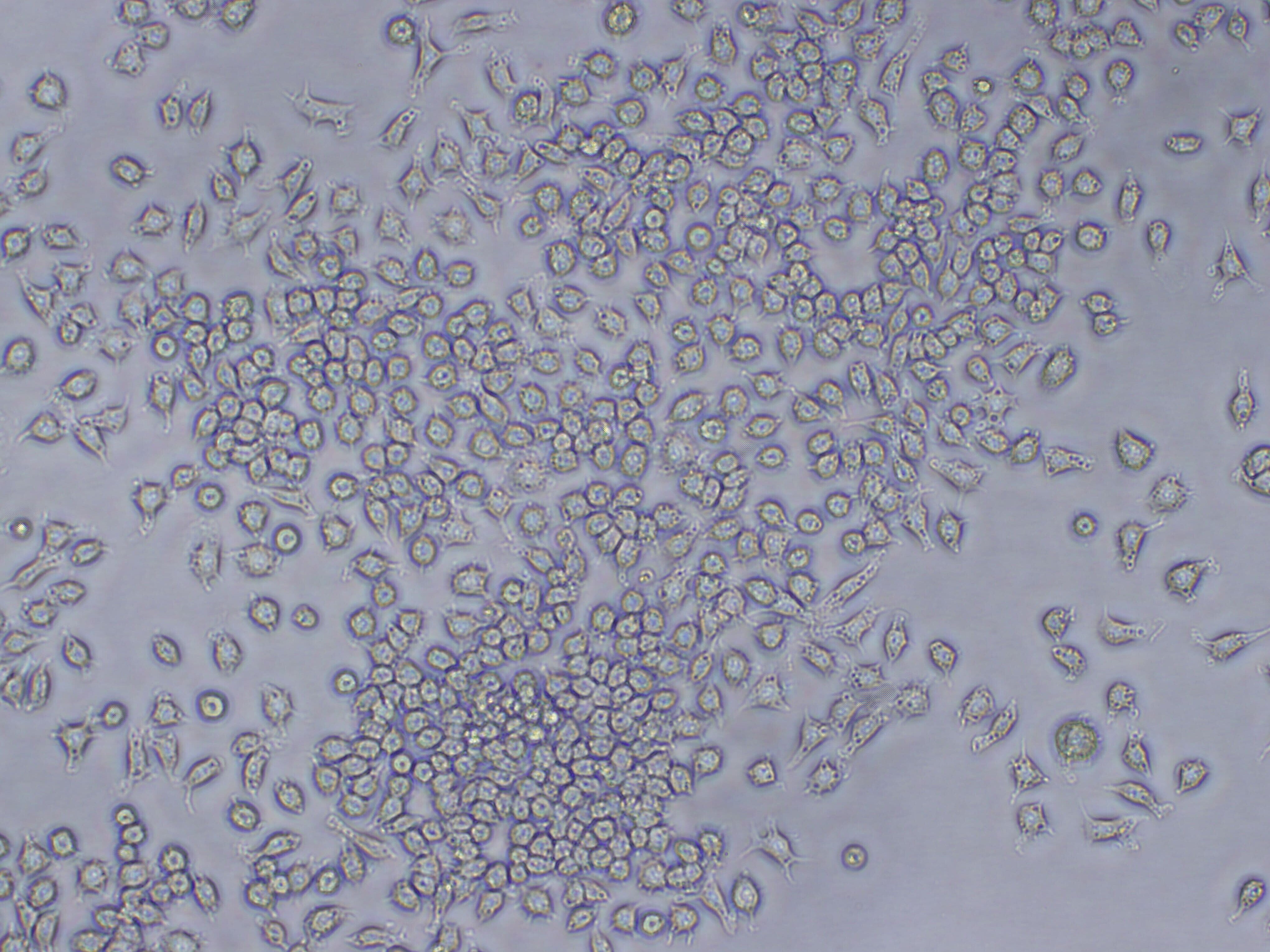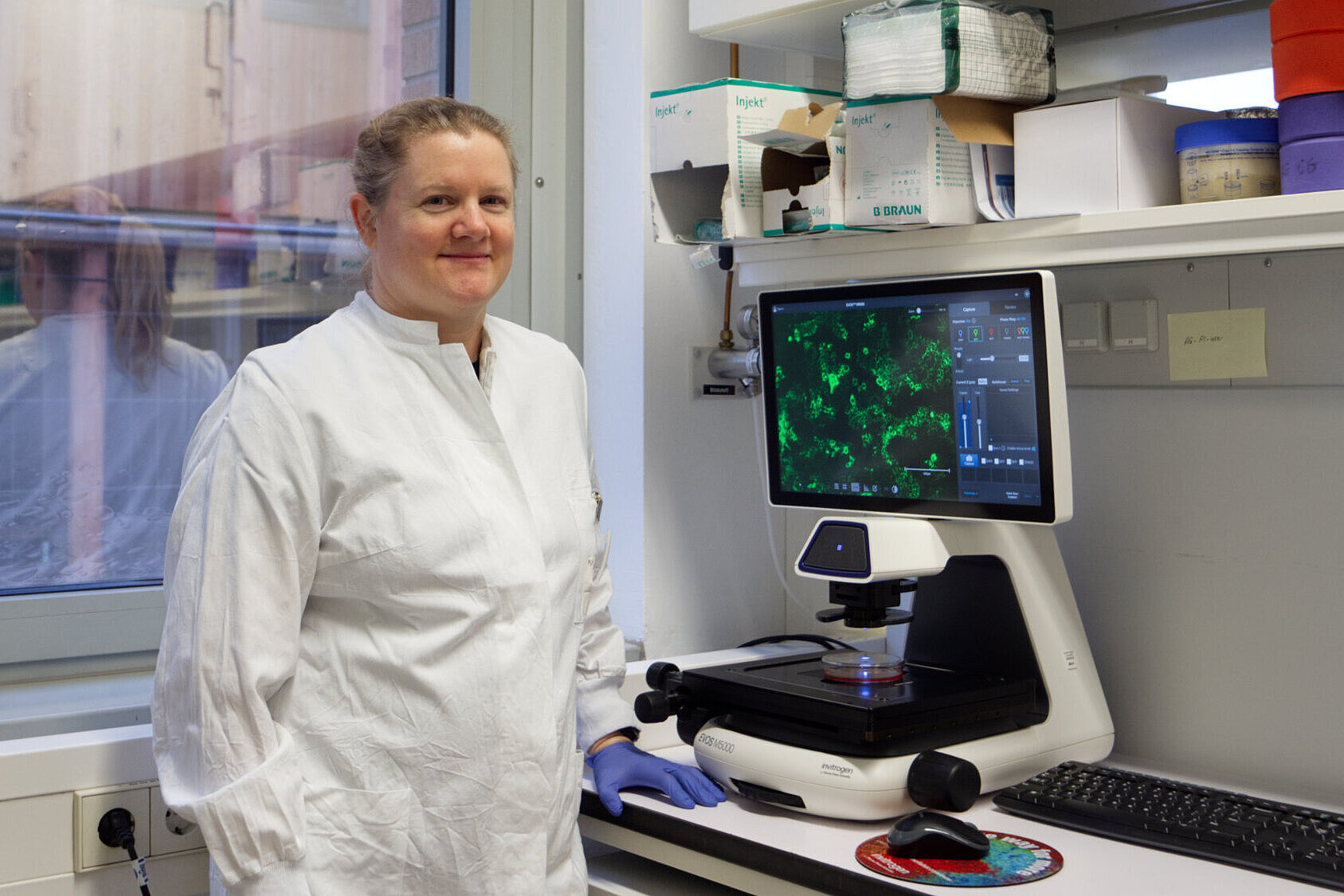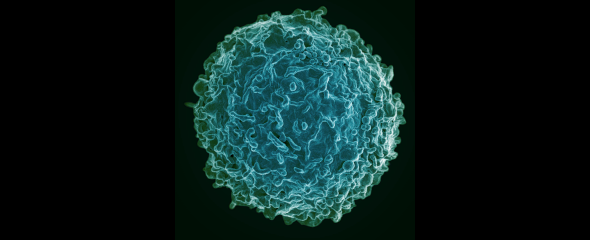Author count: 8
Kalra P., Kister B., Fendt R., Köster M., Pulverer J., Sahle S., ... , Kuepfer L., Kummer U.
(2025)
A comparative computational analysis of IFN-alpha pharmacokinetics and its induced cellular response in mice and humans
PLoS Comput.Biol.,
21
(9)
Author count: 11
Chen S., Rahim M.I., Mikolai C., Paasch D., Winkel A., Doll-Nikutta K., Lachmann N., Menzel H., Wirth D., ... , Hauser H., Stiesch M.
(2025)
Macrophage-mediated control of implant-associated biofilms in a three-dimensional human oral mucosa model
Mater.,
41
(June 2025)
Author count: 11
Brümmer N., Doll-Nikutta K., Schadzek P., Mikolai C., Kampmann A., Wirth D., Hoffmann A., Pott P.C., Karras O., ... , Auer S., Stiesch M.
(2025)
Better models, better treatment? a systematic review of current three dimensional (3D) in vitro models for implant-associated infections
Frontiers in Bioengineering and Biotechnology,
13
Author count: 3
Köster M., Sarker S., Wirth D.
(2025)
Cell-based sensor/actuator systems to combat bacterial infections
Biospektrum,
31
(3)
Author count: 6
Kheirmand-Parizi M., Doll-Nikutta K., Mikolai C., Wirth D., Menzel H., Stiesch M.
(2025)
Dual Antibacterial and Soft-Tissue-Integrative Effect of Combined Strontium Acetate and Silver Nitrate on Peri-Implant Environment: Insights from Multispecies Biofilms and a 3D Coculture Model
ACS Applied Materials and Interfaces,
17
(18)
Author count: 13
Sheldon J.A., Winkler M., Yuan Q., Frericks N., Phillip Brown R.J., Miskey C., Gödecke N., Behme S., Rox K., Mysegades G., Vondran F., ... , Wirth D., Pietschmann T.
(2025)
Adapted hepatitis C virus clone infects innate immunity-deficient mouse hepatocytes with minimal human HCV entry factors
JHEP Reports,
7
(5)
Author count: 13
Desai O., Kumar S., Köster M., Ullah S., Sarker S., Hagemann V., Habib M., Klaassen N., Notter S., Feldmann C., Ehlert N., ... , Hauser H., Wirth D.
(2025)
Macrophages co-loaded with drug-associated and superparamagnetic nanoparticles for triggered drug release by alternating magnetic fields
Drug Deliv.Transl.Res
Author count: 12
Lee M.J., Yeon J.H., Lee J., Kang Y.H., Park B.S., Park J.H., Yun S.H., Wirth D., Yoo S.M., Park C., ... , Gao S.J., Lee M.S.
(2024)
Senescence of endothelial cells increases susceptibility to Kaposi's sarcoma-associated herpesvirus infection via CD109-mediated viral entry
J.Clin.Invest
Author count: 7
Desai O., Köster M., Kloos D., Lachmann N., Hauser H., ... , Poortinga A., Wirth D.
(2025)
Ultrasound-triggered drug release in vivo from antibubble-loaded macrophages
J.Control.Release,
378
(Feb 2025)
Author count: 9
Sarker S., Köster M., Desai O., Rahim M.I., Herrmann S., Behme S., Stiesch M., ... , Hauser H., Wirth D.
(2024)
A generic cell-based biosensor converts bacterial infection signals into chemoattractants for immune cells
Biofabrication.,
17
(1)
Author count: 24
Keles M., Grein S., Froese N., Wirth D., Trogisch F.A., Wardman R., Hemanna S., Weinzierl N., Koch P.S., Uhlig S., Lomada S., Dittrich G.M., Szaroszyk M., Haustein R., Hegermann J., Martin-Garrido A., Bauersachs J., Frank D., Frey N., Bieback K., Cordero J., Dobreva G., ... , Wieland T., Heineke J.
(2024)
Endothelial derived, secreted long non-coding RNAs Gadlor1 and Gadlor2 aggravate cardiac remodeling
Mol.Ther.Nucleic Acids,
35
(3)
Author count: 10
Sinha N., Yang H., Janse D., Hendriks L., Rand U., Hauser H., Köster M., van de Vosse F.N., ... , Greef T.F.A., Tel J.
(2022)
Microfluidic chip for precise trapping of single cells and temporal analysis of signaling dynamics
Communications Engineering,
1
(1)
Author count: 3
Gödecke N., Hauser H., Wirth D.
(2024)
Stable Expression by Lentiviral Transduction of Cells
Methods Mol Biol,
2. edition
(10)
Author count: 29
Morales A.E., Gumenick R., Genovese C.M., Jang Y.Y., Ouedraogo A., Garayo M.I., Pannellini T., Patel S., Bott M.E., Alvarez J., Mun S.S., Totonchy J., Gautam A., La Mora J.D., Chang S., Wirth D., Horenstein M., Dao T., Scheinberg D.A., Rubinstein P.G., Semeere A., Martin J., Godfrey C.C., Moser C.B., Matining R.M., Campbell T.B., Borok M.Z., ... , Krown S.E., Cesarman E.
(2024)
Wilms' tumor 1 (WT1) antigen is overexpressed in Kaposi Sarcoma and is regulated by KSHV vFLIP
PLoS Pathogens,
20
(1)
Author count: 3
Kutle I., Dittrich A., Wirth D.
(2023)
Mouse Models for Human Herpesviruses
Pathogens,
12
(7)
Author count: 4
Gödecke N., Herrmann S., Weichelt V., Wirth D.
(2023)
A Ubiquitous Chromatin Opening Element and DNA Demethylation Facilitate Doxycycline-Controlled Expression during Differentiation and in Transgenic Mice
ACS Synth Biol,
12
(2)
Author count: 10
Latorre Y., Torres M., Vergara M., Berrios J., Sampayo M.M., Gödecke N., Wirth D., Hauser H., ... , Dickson A.J., Altamirano C.
(2023)
Engineering of Chinese hamster ovary cells for co-overexpressing MYC and XBP1s increased cell proliferation and recombinant EPO production
Sci.Rep.,
13
(1)
Author count: 15
Schwerk J., Kemper L., Bussey K.A., Lienenklaus S., Weiss S., Cicin-Sain L., Kröger A., Kalinke U., Collins C.M., Speck S.H., Messerle M., Wirth D., Brinkmann M.M., ... , Hauser H., Köster M.
(2022)
Type I Interferon Signaling Controls Gammaherpesvirus Latency In Vivo
Pathogens,
11
(12)
Author count: 7
Lee M.J., Lee J., Kang S.K., Wirth D., Yoo S.M., ... , Park C., Lee M.S.
(2022)
CXCL1 confers a survival advantage in Kaposi's sarcoma-associated herpesvirus-infected human endothelial cells through STAT3 phosphorylation
J.Med.Virol.
Author count: 7
Yang H., Sinha N., Rand U., Hauser H., Köster M., ... , de Greef T.F.A., Tel J.
(2022)
A universal microfluidic approach for integrated analysis of temporal homocellular and heterocellular signaling and migration dynamics
Biosens.Bioelectron.,
211
(Sept. 2022)
Author count: 6
Gaur P., Riehn M., Zha L., Köster M., Hauser H., Wirth D.
(2021)
Defective interferon amplification and impaired host responses against influenza virus in obese mice
Obesity.(Silver.Spring),
29
(8)
Author count: 11
Rahman S.K., Ansari M.A., Gaur P., Ahmad I., Chakravarty C., Verma D.K., Sharma A., Chhibber S., Nehal N., ... , Wirth D., Lal S.K.
(2021)
The Immunomodulatory CEA Cell Adhesion Molecule 6 (CEACAM6/CD66c) Is a Protein Receptor for the Influenza a Virus
Viruses.,
13
(5)
Author count: 8
Kumashie K.G., Cebula M., Hagedorn C., Kreppel F., Pils M.C., Koch-Nolte F., ... , Rissiek B., Wirth D.
(2021)
Improved Functionality of Exhausted Intrahepatic CXCR5+ CD8+ T Cells Contributes to Chronic Antigen Clearance Upon Immunomodulation
Front Immunol.,
11
Author count: 9
Dubich T., Dittrich A., Bousset K., Geffers R., Büsche G., Köster M., Hauser H., ... , Schulz T.F., Wirth D.
(2021)
3D culture conditions support Kaposi's sarcoma herpesvirus (KSHV) maintenance and viral spread in endothelial cells
J.Mol.Med.(Berl),
99
(3)
Author count: 6
Gödecke N., Herrmann S., Hauser H., Mayer-Bartschmid A., Trautwein M., Wirth D.
(2021)
Rational Design of Single Copy Expression Cassettes in Defined Chromosomal Sites Overcomes Intraclonal Cell-to-Cell Expression Heterogeneity and Ensures Robust Antibody Production
ACS Synth.Biol.,
10
(1)
Author count: 10
Gödecke N., Riedel J., Herrmann S., Behme S., Rand U., Kubsch T., Cicin-Sain L., Hauser H., ... , Köster M., Wirth D.
(2020)
Synthetic rewiring and boosting type I interferon responses for visualization and counteracting viral infections
Nucleic Acids Res.,
48
(20)
Author count: 42
Brown R.J.P., Tegtmeyer B., Sheldon J., Khera T., Anggakusuma, Todt D., Vieyres G., Weller R., Joecks S., Zhang Y., Sake S., Bankwitz D., Welsch K., Ginkel C., Engelmann M., Gerold G., Steinmann E., Yuan Q., Ott M., Vondran F.W.R., Krey T., Ströh L.J., Miskey C., Ivics Z., Herder V., Baumgärtner W., Lauber C., Seifert M., Tarr A.W., Mcclure C.P., Randall G., Baktash Y., Ploss A., Thi V.L.D., Michailidis E., Saeed M., Verhoye L., Meuleman P., Goedecke N., Wirth D., ... , Rice C.M., Pietschmann T.
(2020)
Liver-expressed Cd302 and Cr1l limit hepatitis C virus cross-species transmission to mice
Sci Adv,
6
(45)
Author count: 9
Wahlicht T., Vieyres G., Bruns S.A., Meumann N., Büning H., Hauser H., Schmitz I., ... , Pietschmann T., Wirth D.
(2020)
Controlled Functional Zonation of Hepatocytes in Vitro by Engineering of Wnt Signaling
ACS Synth.Biol.,
9
(7)
Author count: 8
Lapuente D., Stab V., Storcksdieck Genannt Bonsmann M., Maaske A., Köster M., Xiao H., ... , Ehrhardt C., Tenbusch M.
(2020)
Innate signalling molecules as genetic adjuvants do not alter the efficacy of a DNA-based influenza A vaccine
PLoS.ONE.,
15
(4)
Author count: 8
Beauclair G., Naimo E., Dubich T., Rückert J., Koch S., Dhingra A., ... , Wirth D., Schulz T.F.
(2020)
Targeting Kaposi's Sarcoma-Associated Herpesvirus ORF21 Tyrosine Kinase and Viral Lytic Reactivation by Tyrosine Kinase Inhibitors Approved for Clinical Use
J.Virol.,
94
(5)
Author count: 23
Aghajanian H., Kimura T., Rurik J.G., Hancock A.S., Leibowitz M.S., Li L., Scholler J., Monslow J., Lo A., Han W., Wang T., Bedi K., Morley M.P., Saldana R.A.L., Bolar N.A., McDaid K., Assenmacher C.A., Smith C.L., Wirth D., June C.H., Margulies K.B., ... , Jain R., Albelda S.M.
(2019)
Author Correction: Targeting cardiac fibrosis with engineered T cells (Nature, (2019), 573, 7774, (430-433), 10.1038/s41586-019-1546-z)
Nature,
576
(7785)
Author count: 25
Aghajanian H., Kimura T., Rurik J.G., Hancock A.S., Leibowitz M.S., Li L., Scholler J., Monslow J., Lo A., Han W., Wang T., Bedi K., Morley M.P., Linares Saldana R.A., Bolar N.A., McDaid K., Assenmacher C.A., Smith C.L., Wirth D., June C.H., Margulies K.B., Jain R., Puré E., ... , Albelda S.M., Epstein J.A.
(2019)
Targeting cardiac fibrosis with engineered T cells
Nature,
573
(7774)
Author count: 9
Laske T., Bachmann M., Dostert M., Karlas A., Wirth D., Frensing T., Meyer T.F., ... , Hauser H., Reichl U.
(2019)
Model-based analysis of influenza A virus replication in genetically engineered cell lines elucidates the impact of host cell factors on key kinetic parameters of virus growth
PLoS Comput.Biol.,
15
(4)
Author count: 13
Dubich T., Lieske A., Santag S., Beauclair G., Rückert J., Herrmann J., Gorges J., Büsche G., Kazmaier U., Hauser H., Stadler M., ... , Schulz T.F., Wirth D.
(2019)
An endothelial cell line infected by Kaposi's sarcoma-associated herpes virus (KSHV) allows the investigation of Kaposi's sarcoma and the validation of novel viral inhibitors in vitro and in vivo
Journal of Molecular Medicine,
97
(3)
Author count: 11
Ullah S., Seidel K., Türkkan S., Warwas D.P., Dubich T., Rohde M., Hauser H., Behrens P., Kirschning A., ... , Köster M., Wirth D.
(2019)
Macrophage entrapped silica coated superparamagnetic iron oxide particles for controlled drug release in a 3D cancer model
J.Control Release,
294
Author count: 4
Kumar P., Gaur P., Kumari R., Lal S.K.
(2019)
Influenza A virus neuraminidase protein interacts with Hsp90, to stabilize itself and enhance cell survival
J.Cell Biochem.,
120
(4)
Author count: 7
Tolle C., Riedel J., Mikolai C., Winkel A., Stiesch M., ... , Wirth D., Menzel H.
(2018)
Biocompatible Coatings from Smart Biopolymer Nanoparticles for Enzymatically Induced Drug Release
Biomolecules,
8
(4)
Author count: 3
Gödecke N., Hauser H., Wirth D.
(2018)
Stable Expression by Lentiviral Transduction of Cells
Methods Mol.Biol.,
1850
(chapter 4)
Author count: 28
Ziegler P.K., Bollrath J., Pallangyo C.K., Matsutani T., Canli Í., De Oliveira T., Diamanti M.A., Müller N., Gamrekelashvili J., Putoczki T., Horst D., Mankan A.K., Öner M.G., Müller S., Müller-Höcker J., Kirchner T., Slotta-Huspenina J., Taketo M.M., Reinheckel T., Dröse S., Larner A.C., Wels W.S., Ernst M., Greten T.F., Arkan M.C., Korn T., ... , Wirth D., Greten F.R.
(2018)
Mitophagy in Intestinal Epithelial Cells Triggers Adaptive Immunity during Tumorigenesis
Cell,
174
(1)
Author count: 3
Rahim M.I., Ullah S., Müller P.P.
(2018)
Advances and challenges of biodegradable implant materials with a focus on magnesium-alloys and bacterial infections
Metals,
8
(7)
Author count: 10
Geerman S., Brasser G., Bhushal S., Salerno F., Kragten N.A., Hoogenboezem M., de Haan G., Wolkers M.C., ... , Pascutti M.F., Nolte M.A.
(2018)
Memory CD8+ T cells support the maintenance of hematopoietic stem cells in the bone marrow
Haematologica,
103
(6)
Author count: 14
Stichling N., Suomalainen M., Flatt J.W., Schmid M., Pacesa M., Hemmi S., Jungraithmayr W., Maler M.D., Freudenberg M.A., Pluckthun A., May T., Köster M., ... , Fejer G., Greber U.F.
(2018)
Lung macrophage scavenger receptor SR-A6 (MARCO) is an adenovirus type-specific virus entry receptor
PLoS.Pathog.,
14
(3)
Author count: 32
Lipps C., Klein F., Wahlicht T., Seiffert V., Butueva M., Zauers J., Truschel T., Luckner M., Köster M., MacLeod R., Pezoldt J., Hühn J., Yuan Q., Muller P.P., Kempf H., Zweigerdt R., Dittrich-Breiholz O., Pufe T., Beckmann R., Drescher W., Riancho J., Sanudo C., Korff T., Opalka B., Rebmann V., Gothert J.R., Alves P.M., Ott M., Schucht R., Hauser H., ... , Wirth D., May T.
(2018)
Expansion of functional personalized cells with specific transgene combinations
Nat.Commun.,
9
(1)
Author count: 13
Borst K., Frenz T., Spanier J., Tegtmeyer P.K., Chhatbar C., Skerra J., Ghita L., Namineni S., Lienenklaus S., Köster M., Heikenwaelder M., ... , Sutter G., Kalinke U.
(2017)
Type I interferon receptor-signaling delays Kupffer cell replenishment during acute fulminant viral hepatitis
J.Hepatol.,
68
(4)
Author count: 11
Pieters T., Haenebalcke L., Bruneel K., Vandamme N., Hochepied T., Van Hengel J., Wirth D., Berx G., Haigh J.J., ... , van Roy F., Goossens S.
(2017)
Structure-function studies in mouse embryonic stem cells using recombinase-mediated cassette exchange
J.Visualized Exp.,
2017
(122)
Author count: 7
Selvakumar T.A., Bhushal S., Kalinke U., Wirth D., Hauser H., ... , Köster M., Hornef M.W.
(2017)
Identification of a Predominantly Interferon-lambda-Induced Transcriptional Profile in Murine Intestinal Epithelial Cells
Front Immunol.,
8
Author count: 4
Riehn M., Cebula M., Hauser H., Wirth D.
(2017)
CpG-ODN Facilitates Effective Intratracheal Immunization and Recall of Memory against Neoantigen-Expressing Alveolar Cells
Front Immunol.,
8
Author count: 8
Gödecke N., Zha L., Spencer S., Behme S., Riemer P., Rehli M., ... , Hauser H., Wirth D.
(2017)
Controlled re-activation of epigenetically silenced Tet promoter-driven transgene expression by targeted demethylation
Nucleic Acids Res.,
45
(16)
Author count: 9
Pasztoi M., Pezoldt J., Beckstette M., Lipps C., Wirth D., Rohde M., Paloczi K., ... , Buzas E.I., Hühn J.
(2017)
Mesenteric lymph node stromal cell-derived extracellular vesicles contribute to peripheral de novo induction of Foxp3+ regulatory T cells
Eur.J.Immunol.,
47
(12)
Author count: 8
Kunkiel J., Godecke N., Ackermann M., Hoffmann D., Schambach A., Lachmann N., ... , Wirth D., Moritz T.
(2017)
The CpG-sites of the CBX3 ubiquitous chromatin opening element are critical structural determinants for the anti-silencing function
Sci.Rep.,
7
(1)
Author count: 9
Cebula M., Riehn M., Hillebrand U., Kratzer R.F., Kreppel F., Koutsoumpli G., Daemen T., ... , Hauser H., Wirth D.
(2017)
TLR9-Mediated Conditioning of Liver Environment Is Essential for Successful Intrahepatic Immunotherapy and Effective Memory Recall
Mol.Ther.
Author count: 8
Strandt H., Pinheiro D.F., Kaplan D.H., Wirth D., Gratz I.K., Hammerl P., ... , Thalhamer J., Stoecklinger A.
(2017)
Neoantigen Expression in Steady-State Langerhans Cells Induces CTL Tolerance
J.Immunol.,
199
(5)
Author count: 8
Bhushal S., Wolfsmüller M., Selvakumar T.A., Kemper L., Wirth D., Hornef M.W., ... , Hauser H., Köster M.
(2017)
Cell polarization and epigenetic status shape the heterogeneous response to type III interferons in intestinal epithelial cells
Front.Immunol.,
8
(JUN)
Author count: 13
Schmidt M., Laufs S., Aiuti A., Aubourg P., Baum C., Biasco L., Cartier N., Hauser H., Montini E., Moullier P., Snyder R.O., ... , Wirth D., von Kalle C.
(2012)
Biosafety analysis in preclinical and clinical studies
(B2-3)
Author count: 3
Gama-Norton L., Hauser H., Wirth D.
(2012)
Restrictions and requirements for stable lentiviral vector production in HEK293 cells
(A3-6)
Author count: 11
Coroadinha A.S., Wirth D., Rodrigues A.F., Gama-Norton L., Duros C., Artus A., Cohen-Haguenauer O., Marques Alves P., Cruz P.E., ... , Carrondo M.J.T., Hauser H.
(2012)
Modular retroviral producer cell lines
(A2-4)
Author count: 6
Gaur P., Cebula M., Riehn M., Hillebrand U., Hauser H., Wirth D.
(2017)
Diet induced obesity has an influence on intrahepatic T cell responses
Metab.Clin.Exp.,
69
Author count: 13
Lipps C., Badar M., Butueva M., Dubich T., Singh V.V., Rau S., Weber A., Kracht M., Koster M., May T., Schulz T.F., ... , Hauser H., Wirth D.
(2016)
Proliferation status defines functional properties of endothelial cells
Cell Mol.Life Sci,
74
(7)
Author count: 15
Pieters T., Goossens S., Haenebalcke L., Andries V., Stryjewska A., De Rycke R., Lemeire K., Hochepied T., Huylebroeck D., Berx G., Stemmler M.P., Wirth D., Haigh J.J., ... , van Hengel J., van Roy F.
(2016)
p120 Catenin-Mediated Stabilization of E-Cadherin Is Essential for Primitive Endoderm Specification
PLoS Genet.,
12
(8)
Author count: 5
Spencer S., Gugliotta A., Gödecke N., Hauser H., Wirth D.
(2016)
Epigenetic modulations rendering cell-to-cell variability and phenotypic metastability
J Genet.Genomics,
43
Author count: 3
Lipps C., May T., Wirth D.
(2014)
Cell lines: Generation of cell lines and biotechnological applications
Author count: 2
Köster M., Wirth D.
(2016)
Zellen im Zeitraffer - Dynamik der Genexpression in Echtzeit [Cells in time lapse - Dynamics of gene expression in real time]
Biospektrum,
22
(1)
Author count: 8
Rais B., Köster M., Rahim M.I., Pils M., Seitz J.M., Hauser H., ... , Wirth D., Müller P.P.
(2016)
Evaluation of the inflammatory potential of implant materials in a mouse model by bioluminescent imaging of intravenously injected bone marrow cells
J Biomed.Mater.Res A,
104
(9)
Author count: 3
Lipps C., May T., Wirth D.
(2014)
Generation of cell lines and biotechnological applications
(2.1)
Author count: 3
Kruse N., Spencer S., Wirth D.
(2014)
Rational Approaches for Transgene Expression: Targeted Integration and Episomal Maintenance
Author count: 12
Kuehn A., Kletting S., de Souza Carvalho-Wodarz, Repnik U., Griffiths G., Fischer U., Meese E., Huwer H., Wirth D., May T., ... , Schneider-Daum N., Lehr C.M.
(2016)
Human alveolar epithelial cells expressing tight junctions to model the air-blood barrier
ALTEX.,
33
Author count: 6
Lempp F.A., Mutz P., Lipps C., Wirth D., Bartenschlager R., Urban S.
(2015)
Evidence that hepatitis B virus replication in mouse cells is limited by the lack of a host cell dependency factor
J Hepatol.,
64
Author count: 7
Bachmann M., Breitwieser T., Lipps C., Wirth D., Jordan I., ... , Reichl U., Frensing T.
(2016)
Impaired antiviral response of adenovirus-transformed cell lines supports virus replication
J.Gen.Virol.,
97
(2)
Author count: 12
Tran D.D.H., Koch A., Saran S., Armbrecht M., Ewald F., Koch M., Wahlicht T., Wirth D., Braun A., Nashan B., ... , Gaestel M., Tamura T.
(2016)
Extracellular-signal regulated kinase (Erk1/2), mitogen-activated protein kinase-activated protein kinase 2 (MK2) and tristetraprolin (TTP) comprehensively regulate injury-induced immediate early gene (IEG) response in in vitro liver organ culture
Cell.Signal.,
28
(5)
Author count: 7
An Haack I, Derkow K., Riehn M., Rentinck M.N., Kuhl A.A., ... , Lehnardt S., Schott E.
(2015)
The Role of Regulatory CD4 T Cells in Maintaining Tolerance in a Mouse Model of Autoimmune Hepatitis
PLoS ONE,
10
(11)
Author count: 8
Ochel A., Cebula M., Riehn M., Hillebrand U., Lipps C., Schirmbeck R., ... , Hauser H., Wirth D.
(2016)
Effective intrahepatic CD8+ T-cell immune responses are induced by low but not high numbers of antigen-expressing hepatocytes
Cell Mol.Immunol.,
13
Author count: 8
Lieber D., Hochdorfer D., Stoehr D., Schubert A., Lotfi R., May T., ... , Wirth D., Sinzger C.
(2015)
A permanently growing human endothelial cell line supports productive infection with human cytomegalovirus under conditional cell growth arrest
Biotechniques,
59
(3)
Author count: 10
Rand U., Riedel J., Hillebrand U., Shin D., Willenberg S., Behme S., Klawonn F., Köster M., ... , Hauser H., Wirth D.
(2015)
Single-cell analysis reveals heterogeneity in onset of transgene expression from synthetic tetracycline-dependent promoters
Biotechnol.J.,
10
(2)
Author count: 5
Spencer S., Gugliotta A., Koenitzer J., Hauser Hansjörg, Wirth Dagmar
(2014)
Stability of single copy transgene expression in CHOK1 cells is affected by histone modifications but not by DNA methylation
Journal of Biotechnology,
195C
Author count: 12
Harari D., Kuhn N., Abramovich R., Sasson K., Zozulya A.L., Smith P., Schlapschy M., Aharoni R., Köster Mario, Eilam R., ... , Skerra A., Schreiber G.
(2014)
Enhanced in Vivo Efficacy of a Type I Interferon Superagonist with Extended Plasma Half-life in a Mouse Model of Multiple Sclerosis
Journal of Biolical Chemistry,
289
(42)
Author count: 7
Rand U., Hillebrand Upneet, Sievers S., Willenberg S., Köster Mario, ... , Hauser Hansjörg, Wirth Dagmar
(2014)
Uncoupling of the dynamics of host-pathogen interaction uncovers new mechanisms of viral interferon antagonism at the single-cell level
Nucleic Acids Res,
42
(13)
Author count: 18
Dag F., Dolken L., Holzki J., Drabig A., Weingartner A., Schwerk J., Lienenklaus S., Conte I., Geffers R., Davenport C., Rand U., Köster M., Weiss S., Adler B., Wirth D., Messerle M., ... , Hauser H., Cicin-Sain L.
(2014)
Reversible silencing of cytomegalovirus genomes by type I interferon governs virus latency
PLoS Pathogens,
10
(2)
Author count: 6
Botezatu L., Sievers S., Gama-Norton L., Schucht Roland, Hauser Hansjörg, Wirth Dagmar
(2012)
Genetic aspects of cell line development from a synthetic biology perspective
Advances in Biochemical Engineering/Biotechnology,
127
Author count: 9
Dag F., Weingartner A., Butueva M., Conte I., Holzki J., May T., Adler B., ... , Wirth D., In-Ain I.
(2013)
A new reporter mouse cytomegalovirus reveals maintained immediate-early gene expression but poor virus replication in cycling liver sinusoidal endothelial cells
Virology Journal,
10
(1)
Author count: 4
Lipps C., May T., Hauser H., Wirth D.
(2013)
Eternity and functionality - rational access to physiologically relevant cell lines
Biological Chemistry,
394
(12)
Author count: 8
Nehlsen K., Broll S., Kandimalla R., Heinz N., Heine M., Binius S., ... , Schambach A., Bode J.
(2013)
Replicating Minicircles: Overcoming the Limitations of Transient and Stable Expression Systems
Author count: 13
Nandakumar R., Finsterbusch K., Lipps C., Neumann B., Grashoff M., Nair S., Hochnadel I., Lienenklaus S., Wappler I., Steinmann E., Hauser H., ... , Pietschmann T., Kröger A.
(2013)
Hepatitis C Virus Replication in Mouse Cells is Restricted by IFN-Dependent and -Independent Mechanisms
Gastroenterology,
145
(6)
Author count: 7
Cebula Marcin, Ochel Aaron, Hillebrand Upneet, Pils Marina C., Schirmbeck R., ... , Hauser Hansjörg, Wirth Dagmar
(2013)
An Inducible Transgenic Mouse Model for Immune Mediated Hepatitis Showing Clearance of Antigen Expressing Hepatocytes by CD8+ T Cells
PLoS ONE,
8
(7)
Author count: 13
Haenebalcke L., Goossens S., Naessens M., Kruse N., Ghahremani M.F., Bartunkova S., Haigh K., Pieters T., Dierickx P., Drogat B., Nyabi O., ... , Wirth Dagmar, Haigh J.J.
(2013)
Efficient ROSA26-Based Conditional and/or Inducible Transgenesis Using RMCE-Compatible F1 Hybrid Mouse Embryonic Stem Cells
Stem Cell Reviews and Reports,
9
Author count: 10
Haenebalcke L., Goossens S., Dierickx P., Bartunkova S., D'Hont J., Haigh K., Hochepied T., Wirth Dagmar, ... , Nagy A., Haigh J.J.
(2013)
The ROSA26-iPSC mouse: a conditional, inducible, and exchangeable resource for studying cellular (De)differentiation
Cell Reports,
3
(2)
Author count: 3
May T., Hauser Hansjörg, Wirth Dagmar
(2012)
Cell systems: Functional cell lines through new immortalization protocols [Zellsysteme: Funktionale zelllinien durch neue immortalisierungsprotokolle]
Biospektrum,
18
(4)
Author count: 7
Cruz P.E., Rodrigues T., Carmo M., Wirth Dagmar*, Amaral A.I., ... , Alves P.M., Coroadinha A.S.
(2011)
Manufacturing of retroviruses
Methods in Molecular Biology,
737
Author count: 7
Gama-Norton L., Botezatu L., Herrmann S., Schweizer M., Alves P.M., ... , Hauser Hansjörg*, Wirth Dagmar*
(2011)
Lentivirus production is influenced by SV40 large T-antigen and chromosomal integration of the vector in HEK293 cells
Human gene therapy,
22
(10)
Author count: 8
Schucht R., Lydford S., Andzinski L., Zauers J., Cooper J., Hauser Hansjörg*, ... , Wirth Dagmar*, May T.
(2011)
Rapid establishment of G-protein-coupled receptor-expressing cell lines by site-specific integration
Journal of Biomolecular Screening,
16
(3)
Author count: 10
Sandhu U., Cebula M., Behme S., Riemer P., Wodarczyk C., Metzger D., Reimann J., Schirmbeck R., ... , Hauser Hansjörg*, Wirth Dagmar*
(2011)
Strict control of transgene expression in a mouse model for sensitive biological applications based on RMCE compatible ES cells
Nucleic Acids Research,
39
(1)
Author count: 11
Carrondo M., Panet M., Wirth Dagmar*, Coroadinha A.S., Cruz P., Falk H., Schucht R., Dupont F., Geny-Fiamma C., ... , Merten O.W., Hauser Hansjörg*
(2011)
Integrated strategy for the production of therapeutic retroviral vectors
Human gene therapy,
22
(3)
Author count: 3
Schucht R., Wirth Dagmar*, May T.
(2010)
Precise regulation of transgene expression level and control of cell physiology
Cell Biology and Toxicology,
26
(1)
Author count: 12
Loew R., Meyer Y., Kuehlcke K., Gama-Norton L., Wirth D., Hauser H., Stein S., Grez M., Thornhill S., Thrasher A., ... , Baum C., Schambach A.
(2010)
A new PG13-based packaging cell line for stable production of clinical-grade self-inactivating gamma-retroviral vectors using targeted integration
Gene Therapy,
17
(2)
Author count: 9
May T., Butueva M., Bantner S., Markusic D., Seppen J., MacLeod R.A., Weich H., ... , Hauser Hansjörg*, Wirth Dagmar*
(2010)
Synthetic gene regulation circuits for control of cell expansion
Tissue Engineering - Part A,
16
(2)
Author count: 12
Gama-Norton L., Herrmann S., Schucht R., Coroadinha A.S., Low R., Alves P.M., Bartholomae C.C., Schmidt M., Baum C., Schambach A., ... , Hauser Hansjörg*, Wirth Dagmar*
(2010)
Retroviral vector performance in defined chromosomal Loci of modular packaging cell lines
Human gene therapy,
21
(8)
Author count: 5
Wirth Dagmar*, Gama-Norton L., Schucht R., Nehlsen K., Hauser Hansjörg*
(2009)
Site-directed engineering of defined chromosomal sites for recombinant protein and virus expression
BioPharm International,
22
(7)
Author count: 5
Nehlsen K., Herrmann S., Zauers J, Hauser Hansjörg*, Wirth Dagmar*
(2010)
Toxin-antitoxin based transgene expression in mammalian cells.
Nucleic Acids Research,
38
(5)
Author count: 8
Nehlsen K., Schucht R., da Gama-Norton L., Kromer W., Baer A., Cayli A., ... , Hauser Hansjörg*, Wirth Dagmar*
(2009)
Recombinant protein expression by targeting pre-selected chromosomal loci
BMC Biotechnology,
14
(9)
Author count: 3
May T., Hauser Hansjörg*, Wirth Dagmar*
(2007)
In vitro expansion of tissue cells by conditional proliferation
Methods in Molecular Medicine,
140
Author count: 6
May T., Eccleston L., Herrmann S., Hauser Hansjörg*, Goncalves J., Wirth Dagmar*
(2008)
Bimodal and hysteretic expression in mammalian cells from a synthetic gene circuit
PLoS ONE,
3
(6)
Author count: 6
Wirth Dagmar*, Gama-Norton L., Riemer P., Sandhu U., Schucht R., Hauser Hans-Jörg*
(2007)
Road to precision: recombinase-based targeting technologies for genome engineering
Current Opinion in Biotechnology,
18
(5)
Author count: 6
Coroadinha A.S., Schucht R., Gama-Norton L., Wirth Dagmar*, Hauser Hansjörg*, Carrondo M.J.T.
(2006)
The use of recombinase cassette exchange in retroviral vector producer cell lines: predictability and efficiency in transgene replacement
Journal of Biotechnology,
124
(2)
Author count: 9
Deppenmeier S., Bock O., Mengel M., Niemann H., Kues W., Lemme E., Wirth Dagmar*, ... , Wonigeit K., Kreipe H.
(2006)
Health status of transgenic pigs expressing the human complement regulatory protein CD59
Xenotransplantation,
13
(4)


















